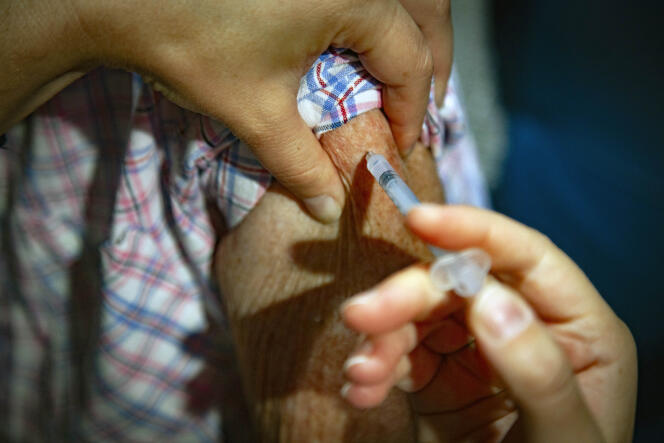


Covid-19 is on the rise again in France, according to the latest data published by Santé Publique France (SPF) on Wednesday, December 6. For the week from November 27 to December 3, the network of SOS Médecins associations reported a 28% surge in suspected cases among adults compared with the previous week. The increase is 24% in hospital emergency departments. In terms of volume, however, medical activity linked to Covid-19 remains moderate: emergency departments recorded 4,353 visits for this reason last week, representing 1.2% of activity (versus 1% the previous week) and resulting in 1,824 hospitalizations.
Meanwhile, wastewater detection, an index that SPF has been publishing since early October, recorded an 24% surge of Covid-19 in one week, which is "indicative of active circulation of the virus in France" according to the agency. This figure should not be over-interpreted as it says nothing about the severity of associated cases, which may well be asymptomatic. "This indicator shows the level of circulation of the virus, but not its impact, and this increase does not necessarily presage future complications for hospitals," stressed Bruno Lina, professor of virology at Hospices Civils de Lyon.
According to Mircea Sofonea, a senior lecturer in epidemiology and the evolution of infectious diseases at the Université de Montpellier, this variation nevertheless remains "very informative," all the more so as it overlaps with an increase in other indicators. Among them are Covid-19 detections by medical biology laboratories, which reported 28,000 positive tests last week, compared with 22,000 the week before, an increase of 27%. "We're really on an upward trend," according to the researcher, as lower temperatures and shorter days lead to more indoor gatherings and therefore pathogen transmission.
Against a backdrop of increased infections and the approach of the festive season, Sofonea is concerned that data on the epidemic is patchier today than in previous years, which makes projections more difficult. "Will the peak of the current wave occur between Christmas Eve and New Year's Eve, or afterwards? We can't use modeling to predict it, and that's a shame," according to the epidemiologist, for whom this information would be useful in order to prepare the healthcare system.
The upturn in the epidemic coincides with the very rapid progression of a new variant of Covid-19, dubbed JN.1. As of November 23, according to SPF, it represented 30% of sequenced viruses in France, compared with 23% a week earlier. It is on course to match the currently dominant variant, EG.5, an avatar of the XBB lineage, which is circulating at 37% according to the latest available data.
You have 55% of this article left to read. The rest is for subscribers only.
